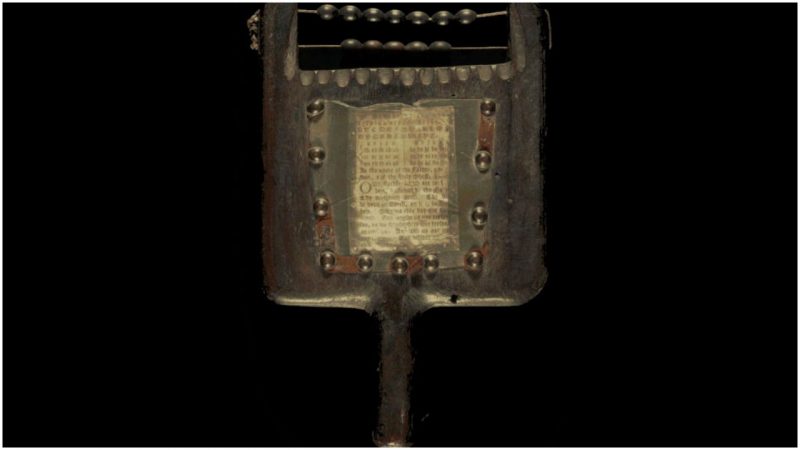Constant technological developments have brought rapid changes to every sphere of our lives, and education is no exception. Keeping up to date with literary developments is a must for every educator.
Learning to read seems as if it must be a lot easier now than in past centuries, thanks to these new inventions and discoveries. We have electronic texts, teaching toys, picture books, and educational TV, all fueled by the latest theories.
Being a child tasked with learning to read in the pre-electronics era doesn’t seem enjoyable. But even in medieval times, there were some early literacy teaching aids that introduced young children to the basics of reading in creative ways.
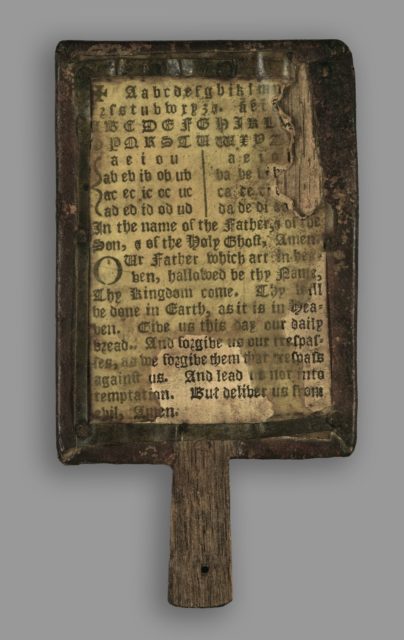
One of the earliest literacy teaching aids was the hornbook. Available since the 15th century, a hornbook was a primer for children, usually made of wood, leather, or perhaps bone in the shape of a paddle. It would be engraved with the alphabet in both capital and lowercase letters, the five vowels, and a religious verse, such as the Lord’s Prayer or a Hail Mary.
These peculiar book-shaped objects first appeared in England and became a key educational tool of the era. Hornbooks got their name from the sheet of paper covered by a thin piece of horn as a means of protection. Oxen and sheep horns were used for this laminating structure. The horn was left in cold water for weeks, separating the usable part from the bone. It was heated, in boiling water or over fire, and pressed by plates to make it transparent.
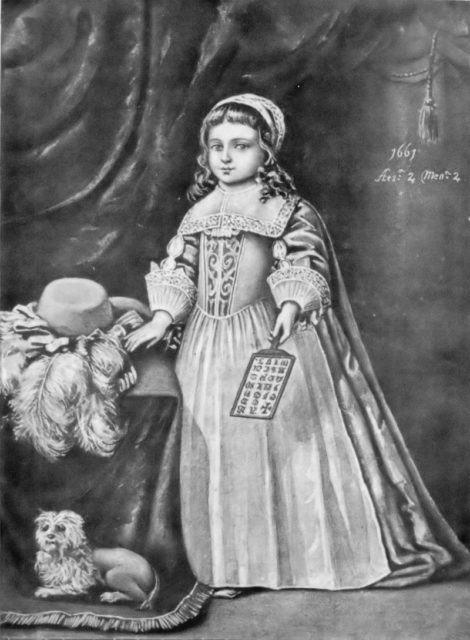
Although hornbooks were mass produced, not all of them were the same. There are some examples of hornbooks made of interesting material, such as gingerbread. Children could eat the letters of the alphabet they had learned.
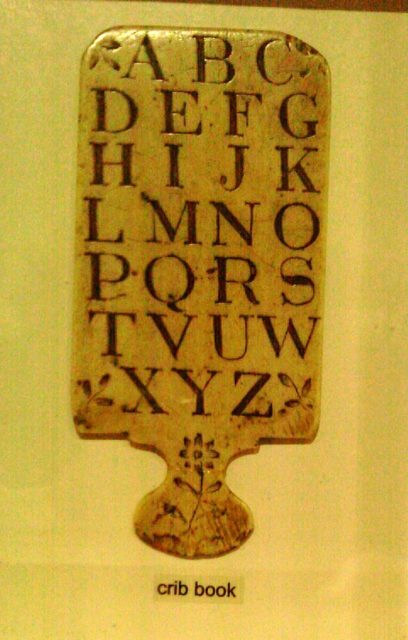
Among the rarest hornbooks were the ones made out of silver. One is on display at the Victoria and Albert Museum, and as stated on the official website of the museum, it was a gift from Queen Anne to her godson, Master Guy Selbright. His crest is engraved on the handle, and the Queen’s portrait medallion is on the back.
Unlike today, when children learn to read and write at the same time, back in the days of the hornbooks, reading was taught first. Children used them to memorize the alphabet, the Lord’s Prayer, and Hail Mary, and once they had mastered reading, they were taught to write.
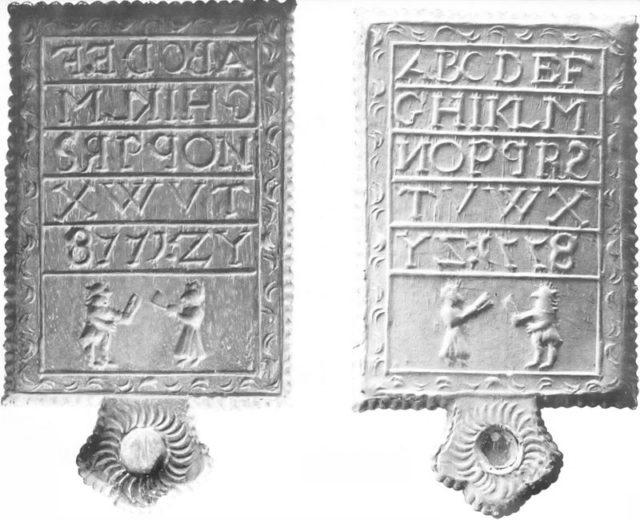
There was no strict size governing hornbooks, but they were usually about 2¾ x 5 inches, mostly due to practical reasons. Their size meant that a child could easily hold a hornbook in one hand.
They also wanted to make sure that children would not lose their hornbooks and people would make a hole in the handle and by using a cord they would hang it on the girdle or around the child’s neck, thus making it a part of their wardrobe.
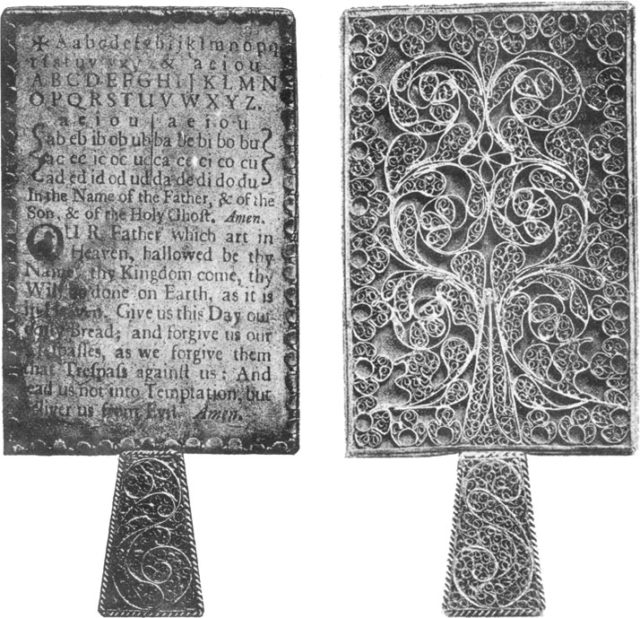
Hornbooks also became an important part of learning in Colonial America. During the time when paper was too expensive in America, hornbooks were the favored method for children memorizing their letters.
By the end of the 18th century, the hornbook was dying out, and by the first decades of the 19th century, the wooden base had already been replaced by cardboard.
